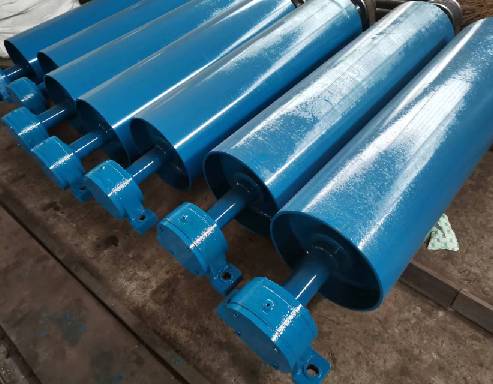 Afrikaans
Afrikaans  Albanian
Albanian  Amharic
Amharic  Arabic
Arabic  Armenian
Armenian  Azerbaijani
Azerbaijani  Basque
Basque  Belarusian
Belarusian  Bengali
Bengali  Bosnian
Bosnian  Bulgarian
Bulgarian  Catalan
Catalan  Cebuano
Cebuano  Corsican
Corsican  Croatian
Croatian  Czech
Czech  Danish
Danish  Dutch
Dutch  English
English  Esperanto
Esperanto  Estonian
Estonian  Finnish
Finnish  French
French  Frisian
Frisian  Galician
Galician  Georgian
Georgian  German
German  Greek
Greek  Gujarati
Gujarati  Haitian Creole
Haitian Creole  hausa
hausa  hawaiian
hawaiian  Hebrew
Hebrew  Hindi
Hindi  Miao
Miao  Hungarian
Hungarian  Icelandic
Icelandic  igbo
igbo  Indonesian
Indonesian  irish
irish  Italian
Italian  Japanese
Japanese  Javanese
Javanese  Kannada
Kannada  kazakh
kazakh  Khmer
Khmer  Rwandese
Rwandese  Korean
Korean  Kurdish
Kurdish  Kyrgyz
Kyrgyz  Lao
Lao  Latin
Latin  Latvian
Latvian  Lithuanian
Lithuanian  Luxembourgish
Luxembourgish  Macedonian
Macedonian  Malgashi
Malgashi  Malay
Malay  Malayalam
Malayalam  Maltese
Maltese  Maori
Maori  Marathi
Marathi  Mongolian
Mongolian  Myanmar
Myanmar  Nepali
Nepali  Norwegian
Norwegian  Norwegian
Norwegian  Occitan
Occitan  Pashto
Pashto  Persian
Persian  Polish
Polish  Portuguese
Portuguese  Punjabi
Punjabi  Romanian
Romanian  Russian
Russian  Samoan
Samoan  Scottish Gaelic
Scottish Gaelic  Serbian
Serbian  Sesotho
Sesotho  Shona
Shona  Sindhi
Sindhi  Sinhala
Sinhala  Slovak
Slovak  Slovenian
Slovenian  Somali
Somali  Spanish
Spanish  Sundanese
Sundanese  Swahili
Swahili  Swedish
Swedish  Tagalog
Tagalog  Tajik
Tajik  Tamil
Tamil  Tatar
Tatar  Telugu
Telugu  Thai
Thai  Turkish
Turkish  Turkmen
Turkmen  Ukrainian
Ukrainian  Urdu
Urdu  Uighur
Uighur  Uzbek
Uzbek  Vietnamese
Vietnamese  Welsh
Welsh  Bantu
Bantu  Yiddish
Yiddish  Yoruba
Yoruba  Zulu
Zulu Exploring the Functionality and Applications of Industrial Conveyor Pulleys in Material Handling Systems
The Importance of Industrial Conveyor Pulleys in Modern Manufacturing
In today’s fast-paced industrial environment, the efficiency and effectiveness of production processes are paramount. One critical component that plays a significant role in this regard is the conveyor pulley. Conveyor pulleys are key elements in material handling systems, facilitating the movement of goods and materials through various stages of the manufacturing process. This article delves into the different types of industrial conveyor pulleys, their functions, and their importance in enhancing operational efficiency.
Types of Conveyor Pulleys
Industrial conveyor pulleys come in various types, each serving unique purposes. The most commonly seen types include drive pulleys, return pulleys, snub pulleys, take-up pulleys, and bending pulleys.
1. Drive Pulleys These are essential components that provide the necessary drive to the conveyor belt. They are located at the head of the conveyor and are typically powered by electric motors. Drive pulleys ensure that the belt moves smoothly and efficiently, enabling the material to be transported from one point to another.
2. Return Pulleys Positioned at the tail of the conveyor, return pulleys manage the return journey of the belt. They assist in keeping the belt taut and preventing any sagging or misalignment that could lead to operational issues.
3. Snub Pulleys These pulleys are used to increase the traction of the drive pulley by providing additional contact with the conveyor belt. Snub pulleys are pivotal in enhancing the overall efficiency of the belt drive system.
4. Take-up Pulleys This type of pulley is crucial for adjusting the tension of the conveyor belt. Maintaining proper tension is essential to prevent slippage and ensure the longevity of the belt.
industrial conveyor pulleys

Functions and Benefits
The primary function of conveyor pulleys is to support the conveyor belt and ensure smooth operation. However, their benefits extend far beyond mere support. Here are some of the key advantages
- Enhanced Efficiency By providing the necessary drive and tension, conveyor pulleys contribute to the overall efficiency of material handling systems. An efficient system translates to faster production times and reduced operational costs.
- Durability and Reliability Industrial conveyor pulleys are engineered for durability, capable of withstanding heavy loads and harsh operational environments. They are often made from high-quality materials such as steel or aluminum, which increases their lifespan and reliability.
- Reduced Maintenance With sturdy construction and proper tensioning capabilities, conveyor pulleys help minimize wear and tear on the conveyor belt. This results in lower maintenance costs and reduced downtime for repairs, allowing for smoother operations.
- Customizability Conveyor pulleys can be tailored to meet specific requirements based on the application needs, including size, load capacity, and environmental conditions. This flexibility ensures that industries can implement systems that best suit their operational demands.
Conclusion
In conclusion, industrial conveyor pulleys are vital components of modern manufacturing and material handling systems. Their various types, functions, and inherent advantages underscore their importance in enhancing operational efficiency. As industries continue to evolve and demand higher production rates, the role of conveyor pulleys in optimizing processes will become increasingly crucial. Investing in high-quality conveyor pulleys not only streamlines operations but also contributes to long-term success in a competitive market.
-
Revolutionizing Conveyor Reliability with Advanced Rubber Lagging PulleysNewsJul.22,2025
-
Powering Precision and Durability with Expert Manufacturers of Conveyor ComponentsNewsJul.22,2025
-
Optimizing Conveyor Systems with Advanced Conveyor AccessoriesNewsJul.22,2025
-
Maximize Conveyor Efficiency with Quality Conveyor Idler PulleysNewsJul.22,2025
-
Future-Proof Your Conveyor System with High-Performance Polyurethane RollerNewsJul.22,2025
-
Driving Efficiency Forward with Quality Idlers and RollersNewsJul.22,2025





























